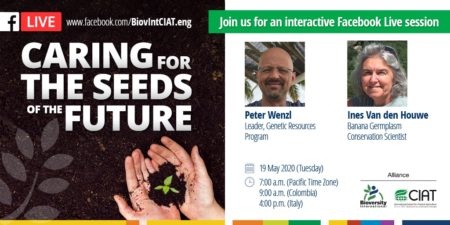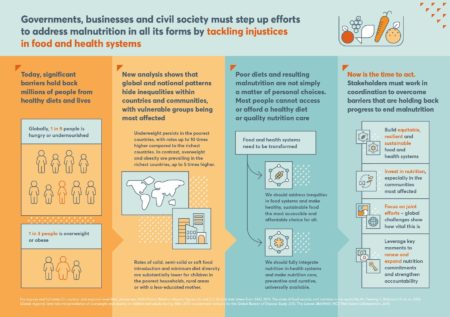Watch the recording on Facebook, if you can. And that’s hot on the heels of this discussion hosted by the Global Landscapes Forum.
Brainfood: Red Listing, Name checking, Diversification, New breeding, Seed data, Tea genome, Sampling strategies, Plum diversity, Fruit taste, Enset seeds, Maize & nutrition, Emilian grapes
- Caution Needed When Predicting Species Threat Status for Conservation Prioritization on a Global Scale. Automated rapid preliminary assessments are all well and good, but…
- WorldFlora: An R package for exact and fuzzy matching of plant names against the World Flora Online Taxonomic Backbone data. Automated rapid taxonomic name checking is all well and good, but…
- Diverse approaches to crop diversification in agricultural research. A review. Too diverse.
- Reinventing quantitative genetics for plant breeding: something old, something new, something borrowed, something BLUE. Retire additive variance.
- Nikolaeva et al.’s reference book on seed dormancy and germination. A treasure trove of data comes to light.
- The reference genome of tea plant and resequencing of 81 diverse accessions provide insights into genome evolution and adaptation of tea plants. Three groups, originating in SW China.
- Taxonomic similarity does not predict necessary sample size for ex situ conservation: a comparison among five genera. The old rule-of-thumb of 50 individuals was not all that far off after all.
- Genetic assessment of the pomological classification of plum Prunus domestica L. accessions sampled across Europe. 93 unique accessions out of 104 across 14 partners. Pretty good, no?
- Genome‐wide association of volatiles reveals candidate loci for blueberry flavor. Can predict taste from genetics.
- Germination ecology of wild and domesticated Ensete ventricosum: Evidence for maintenance of sexual reproductive capacity in a vegetatively propagated perennial crop. Seeds from domesticated material are not much different from the wild ones, except in germination niche.
- Mining maize diversity and improving its nutritional aspects within agro‐food systems. Biofortification is only the beginning.
- Genetic Characterization of Grapevine Varieties from Emilia-Romagna (Northern Italy) Discloses Unexplored Genetic Resources. About half (62) of the unique accessions (122) in a collection (178) are hardly known.
Diversify for better and more equitable nutrition
This year’s Global Nutrition Report came out yesterday. It calls for…
…a pro-equity agenda that mainstreams nutrition into food systems and health systems, supported by strong financing and accountability. With only five years left to meet the 2025 global nutrition targets, time is running out. We must focus action where the need is greatest for maximum impact.
That includes actions centred around increasing dietary diversity, especially for kids. Prabhu Pingali’s Spotlight 4.1 section of the report shows that more attention to non-staples crops can be a valuable approach for that.
Spotlight 4.1 shows that virtually all the increase in food energy (calories) from 1970 to 2010 is accounted for by non-staple crops, which are relatively more nutrient-dense. The proportion of calories from sugars and sweeteners has declined since 1970. This positive trend highlights the need for a more balanced policy and research and development focus on non-staple crops, to support producers to diversify. This in turn could improve the diversity of crops contributing to a balanced and healthy dietary composition.
Pity this important insight hasn’t found its way in much of the media coverage.
Brainfood: Community seedbanks, Habitat conservation, Maize breeding, NWFP, Neolithic dairy, Straw, Double burden, Species protection, Salty rice, Barley landraces, Scicomm
- Do community seed banks contribute to the social-ecological resilience of communities? A case-study from Western Guatemala. Yes, but they have to move with the times.
- Reconciling global priorities for conserving biodiversity habitat. Only about 20% of high value habitat is protected.
- Genome-wide selection and genetic improvement during modern maize breeding. Breeding in the US and China converged.
- Non-wood forest products in Europe – A quantitative overview. Value of berries, mushrooms etc. amounts to almost three quarters of the value of the wood harvest, ten times the usually estimate.
- Latitudinal gradient in dairy production with the introduction of farming in Atlantic Europe. Was there a taboo against fish?
- Recent Advances in Dual Purpose Rice and Wheat Research: a synthesis. It was worth focusing on straw in breeding, and still is.
- Mapping local patterns of childhood overweight and wasting in low- and middle-income countries between 2000 and 2017. Hotspots in Indonesia, Thailand, southeastern China, Botswana, Cameroon and central Nigeria. Surely dietary diversity could help in those places?
- Is there a peaceful cohabitation between human and natural habitats? Assessing global patterns of species loss. Yes, there is, in very poor and very rich places. Would be interesting to mash up with the above.
- Back to the Wild: On a Quest for Donors Toward Salinity Tolerant Rice. Need to move beyond rufipogon.
- Insights into phylogeny, age and evolution of Allium (Amaryllidaceae) based on the whole plastome sequences. Monophyletic, amazingly, with 3 evolutionary lineages.
- Barley Landraces: Ecological heritage for edaphic stress adaptations and sustainable production. Use landraces as recipients, rather than donors. Before it’s too late.
- Ten simple rules for innovative dissemination of research. More in the breach, I suspect…
Plant, People, Planet, Data
We are creating a special collection of Plants, People, Planet to provide a space for this range of opinions as well as examples and background information on these complex and challenging topics.
Oh yeah, and what might those be, Colin? Nothing less than access to digital information on crop diversity. That usually means genotypic information, but not only. You’ll remember that issue was very much front and centre at the most recent meeting of the Governing Body of the Plant Treaty a few months back, in another life. Got a case study, or indeed a solution? You can submit them here.

